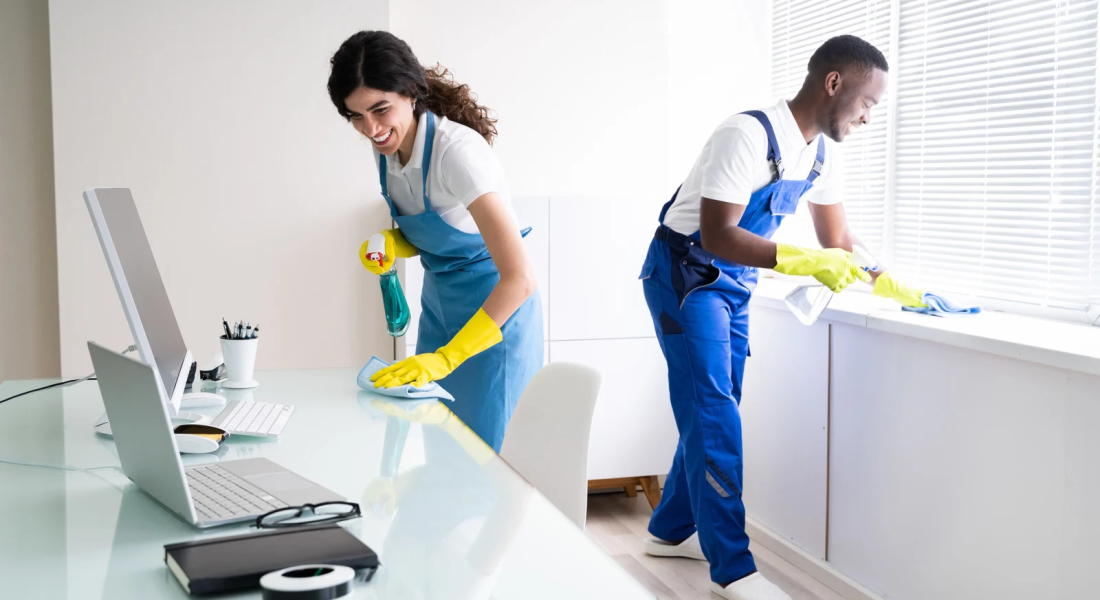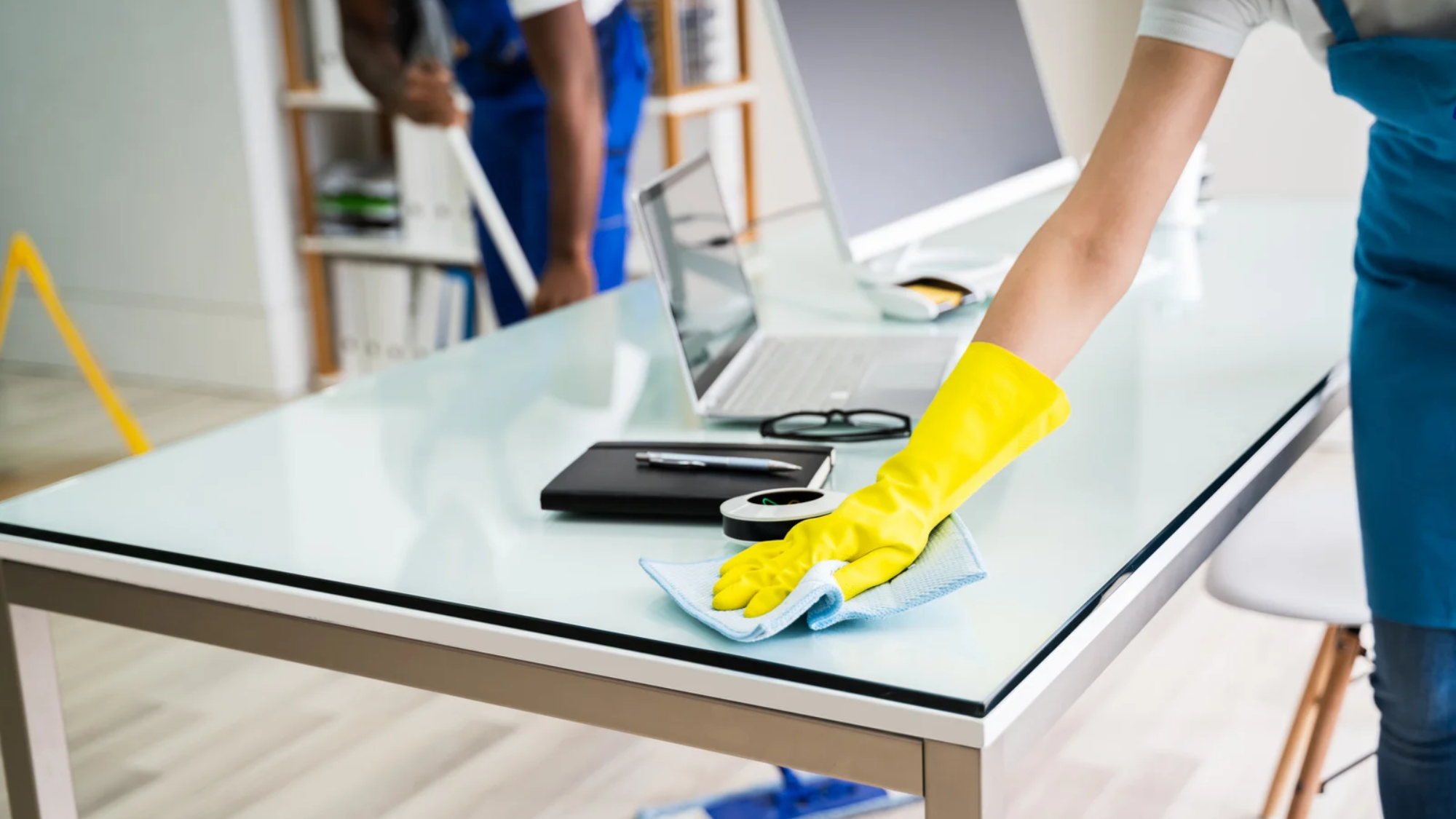Key Takeaways
- A clean and organized office boosts employee productivity and morale.
- Developing a structured cleaning schedule helps keep workspaces consistently tidy.
- Decluttering desks, improving storage, and maintaining air quality enhance the work environment.
- Professional cleaning services ensure thorough and consistent cleanliness.
- Clean office spaces create a positive impression on clients and visitors.
A clean and well-organized office is more than just a pleasant environment — it’s a foundation for increased productivity, improved employee morale, and a professional atmosphere that leaves a lasting impression on clients and visitors. Studies have shown that a clutter-free and hygienic workspace leads to better focus, reduced stress, and even fewer sick days among staff. But maintaining a spotless office isn’t always easy — it requires consistent effort and smart strategies.
When employees work in a clean and organized space, they can focus better, make fewer mistakes, and feel more motivated. On the other hand, clutter and dirt can lead to stress, distractions, and even health issues. Clients also take notice — a clean and professional office reflects positively on your business, boosting trust and credibility.
In this article, we’ll explore ten essential tips for keeping your office clean, organized, and highly productive. From developing a cleaning schedule to improving indoor air quality, these practical strategies will help you maintain a spotless and efficient workspace.
1. Develop a Cleaning Schedule
Creating a structured cleaning schedule ensures that no areas are overlooked. Divide tasks into daily, weekly, and monthly checklists. Daily tasks can include emptying trash bins and disinfecting desks, while weekly activities may cover dusting shelves and cleaning windows.
Key Tip:Assign specific responsibilities to employees or cleaning staff to maintain accountability.
2. Declutter Desks and Workstations
Cluttered workstations reduce focus and productivity. Encourage employees to minimize paper piles, organize files digitally, and utilize drawer organizers.
Key Tip:Implement a “clean desk policy” that encourages staff to clear their workspaces at the end of each day.
3. Provide Ample Storage Solutions
Disorganized documents and office supplies can quickly create chaos. Introduce filing cabinets, shelves, and labeled bins to keep items stored neatly.
Key Tip:Digitize paperwork whenever possible to reduce paper clutter.

4. Implement Regular Dusting and Vacuuming
Dust accumulates rapidly in office spaces, especially in carpeted areas and around electronic devices. Regular vacuuming reduces allergens and improves air quality.
Key Tip:Focus on hidden areas such as behind monitors, under desks, and around HVAC vents.
5. Prioritize Kitchen and Breakroom Cleanliness
These communal spaces are prone to spills, odors, and bacteria buildup. Regularly wipe down countertops, appliances, and dining tables.
Key Tip:Establish rules for staff to clean their dishes and remove expired food from the fridge.
6. Maintain Clean Restrooms
Restrooms should be cleaned daily to ensure hygiene and comfort. Regularly disinfect sinks, toilets, and countertops while replenishing soap and paper supplies.
Key Tip:Install motion-sensor dispensers to minimize contact with surfaces.
7. Clean Electronics and Office Equipment
Computer monitors, keyboards, phones, and printers often collect dust and fingerprints. Use microfiber cloths and disinfectant wipes designed for electronics to keep them clean and germ-free.
Key Tip:Encourage employees to clean their devices weekly to maintain a healthy environment.

8. Keep Entryways and Common Areas Spotless
High-traffic areas such as reception spaces and conference rooms should be cleaned frequently to create a positive impression. Regularly vacuum carpets, mop floors, and disinfect door handles.
Key Tip:Consider placing floor mats near entrances to reduce dirt accumulation.
9. Invest in Indoor Air Quality Improvement
Good air quality is essential for employee well-being. Regularly clean air ducts, replace air filters, and introduce air-purifying plants to promote fresh airflow.
Key Tip:Adding air quality monitors can help detect issues early.
10. Hire Professional Cleaning Services
While daily maintenance is crucial, investing in periodic deep cleaning from professionals ensures thorough sanitation and addresses overlooked areas.
Key Tip:Schedule professional services quarterly or semi-annually for optimal results.
Conclusion
A clean office is more than just a visual benefit — it boosts morale, reduces illness, and enhances overall productivity. By implementing these ten steps, you can create a healthier and more efficient workspace that benefits both employees and clients.
Encourage your team to take pride in maintaining a clean office — it will pay off in better performance, happier employees, and a more professional image.
At Clean Corps, we’re dedicated to helping businesses create spotless, productive workspaces. Trust us to handle the hard work so you can focus on what matters most — growing your business.
FAQ
- How often should an office be professionally cleaned?
Most offices benefit from professional cleaning services at least once every three months. High-traffic areas may require more frequent attention. - What’s the best way to keep workstations clean?
Encourage employees to follow a clean desk policy and provide them with disinfectant wipes to clean their workspaces daily. - Are eco-friendly cleaning products effective for office cleaning?
Yes, eco-friendly products can effectively remove dirt and bacteria while reducing environmental impact. - How can I improve air quality in my office?
Use air purifiers, regularly clean air vents, and introduce indoor plants to improve air circulation and freshness. - Should I hire a cleaning service or rely on employees?
A combination works best — professional cleaning ensures thorough sanitation, while employees can handle daily maintenance.
Quality Cleaning at Your Fingertips in Orlando – Request Your Quote Today!
We’ve Received Your Order!
Thank you for reaching out to CleanCorps.
Please note that we have received your information and a dedicated advisor will be reaching out to you very soon to go through next steps.
Immediate Concerns? If you have urgent questions or matters to discuss, or if you don’t hear back from us in a few hours, please don’t hesitate to reach us directly at:
Phone: (407) 638-8956

